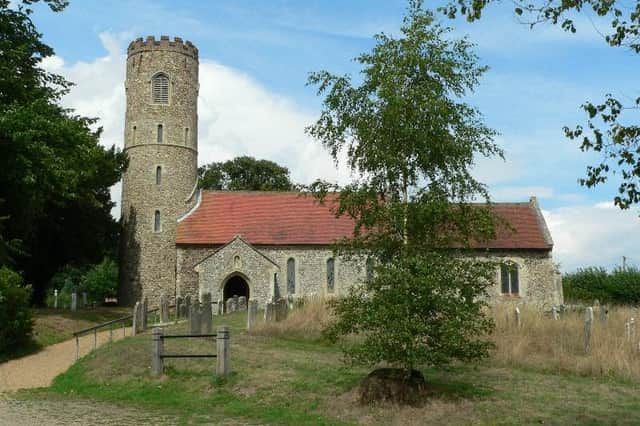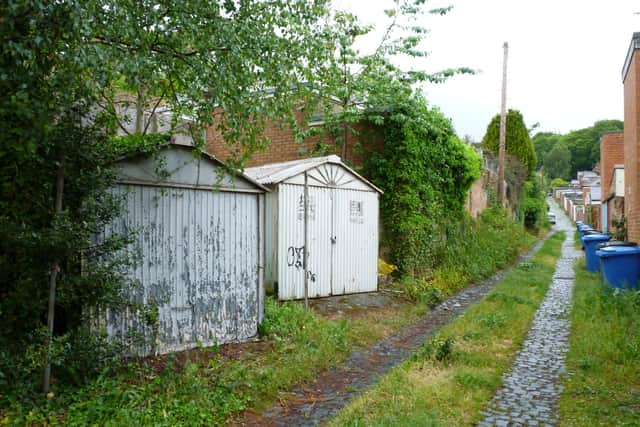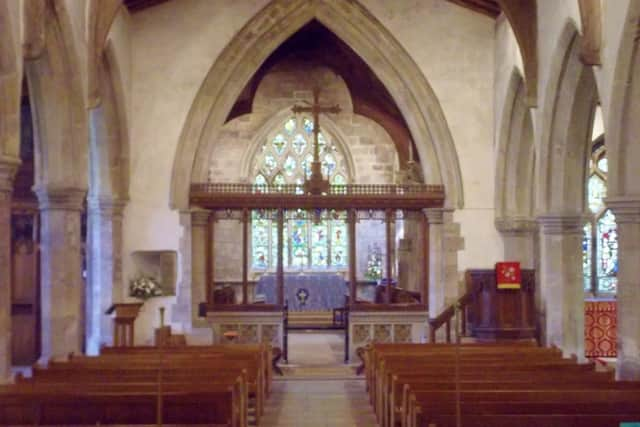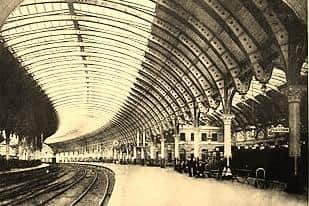Morpathia: The latest article about the Morpeth Dispensary - Dr Gostling (3)


He was already an LSA and so had been fully qualified for about three months when he came to Morpeth in May 1884. He stayed for almost three years, until October 1886.
His medical reports for 1884 and 1885 are typical of Morpeth in the later 19th Century. Four or five hundred patients were treated each year, most were cured, about twenty relieved and about thirty died.
Advertisement
Hide AdAdvertisement
Hide AdThe most common diseases were chest and throat infections – bronchitis, pneumonia, pleurisy and tonsillitis. Other common diseases were dyspepsia, diarrhoea, rheumatism and ophthalmia, nowadays called conjunctivitis.


It was particularly serious in the case of infants and was sometimes a cause of death. The largest single cause, however, was tuberculosis.
In October 1885, Dr Gostling attended an inquest as a witness. A football competition had been in progress on Mr Almond’s field in Howard Terrace when one of the players, John William Mavin, collapsed while running with the ball. He died a few minutes later.
Mr John Turner, a school teacher living in Howard Terrace, gave evidence at the inquest:
Advertisement
Hide AdAdvertisement
Hide Ad“The opposite team were coming towards him but I could not say that they were up to him. When he was lying on the ground his opponents were not close to him. I never saw him ill-used or knocked down. I sent for the doctor before we got him to my house.


“John Harry Gosling said: I am a duly registered surgeon residing in Morpeth. I have seen the deceased, and made an external examination. I was sent for very shortly after he was found – almost immediately.
“I noticed the mark on the left side, just over the region of the heart, a slight bruise. It was certainly not such as to cause his death. ... my opinion is that he died from natural causes, not the result of an accident.”
This is, in fact, the only detailed notice we have of Dr Gostling’s work as a doctor. What is perhaps more interesting to us is how rapid the development of football had been since the Football Association was formed in 1863. Also the fact that, in 1885, most of the land on the north side of Howard Road was still unbuilt on.
Advertisement
Hide AdAdvertisement
Hide AdAlthough they expected their house surgeons to work long hours and to live over the Dispensary so as to be available at all times, the Committee were very fair in respect of holidays. On August 2, 1886, he requested a month’s leave to commence on the 4th, the honorary surgeons having kindly agreed to cover – so granted.


Not long after that, at the committee meeting on October 4, he resigned and asked if he might appoint a fully qualified locum for three months instead of giving notice. This was agreed and it was resolved to pay his salary for August and September. He had served for over two-and-a-half years and evidently to the satisfaction of the Committee.
Later that month, St James’s devoted the offertory from the Harvest Festival, which was also the feast day of St Luke, to Morpeth Dispensary. St Luke was, of course, a physician.
Dr Gostling’s departure arose from his appointment as assistant to a Dr Tempest Anderson of York and there are references in the York papers to him that October, soon after he left Morpeth.
Advertisement
Hide AdAdvertisement
Hide AdHe must, however, have come back quite regularly over the next two years because on January 17, 1889, he was married here. This from the Yorkshire Gazette:
“At the Parish Church of Morpeth, on the 17th inst., by the Hon. and Rev Canon Grey, Rector of Morpeth, assisted by the Rev George Robinson, Vicar of Ulgham and brother-in-law of the bride, John Harry Gostling, L.R.C.P. (London), M.R.C.S., and L.S.A. of York (late of Morpeth) was married to Miss Isabella Septima Hardy, youngest daughter of the late John Robert Hardy, of Morpeth.
“The bride was given away by her brother. Miss Kate Swanston, cousin of the bride, acted as bridesmaid and the groom was accompanied by Mr John Anderson, of Morpeth.
“The wedding presents numbered over 120, and included a silver and velvet jewel box from Canon and Lady Elizabeth Grey, and a biscuit box and toast rack from the teachers and scholars of the Morpeth Sunday School. Mr and Mrs Gostling left Morpeth by the 11.20 train for the South.”
Advertisement
Hide AdAdvertisement
Hide AdThey went on to have two children, both daughters, the first being born in November 1889. They still had connections in Morpeth.
Many years later, in 1909, they attended the funeral of Mrs Gostling’s brother, Mr John Hardy; he was the actuary (manager) of Morpeth Savings Bank and lived at 7, Howard Terrace.
Dr Gostling is mentioned quite often in the York papers, attending inquests and accidents, and particularly accidents taking place at the railway station.
On November 2, 1892, both he and his senior, Dr Tempest Anderson, along with other York doctors, were taken by special train to tend the wounded at the Thirsk railway accident. Dr Anderson was in fact Surgeon to the NER.
Advertisement
Hide AdAdvertisement
Hide AdThe last notice I have of Dr Gostling in this context is in 1899, when he gave evidence at an inquest.
The Gostlings had a house in the centre of York, with a “particularly fine garden”. They mixed in society and were frequently guests at balls and other entertainments given by the Sheriff of York.
He was elected a member of the Council of the York Medical Society in 1901 and was vice-chair of the Yorkshire Branch, York Division, in 1933, but his career was otherwise unremarkable.
He died in September 1940, aged 78. The Yorkshire Post again:
Advertisement
Hide AdAdvertisement
Hide Ad“The death occurred yesterday of Dr John Harry Gostling, York’s oldest medical practitioner and the oldest member of the York Medical Society. For 50 years he was a songman at St Mary’s (Castlegate) Church, but in recent years was associated with St Olave’s Church. ... He leaves a widow and two daughters – Mrs Dickinson, wife of Surgeon Commander Dickinson, R.N., and Mrs Windley, wife of the Vicar of St Olave’s.”
What was remarkable, however, was his fitness and longevity, as we learn from the same paper:
“Dr. John Henry Gostling – known to a wide circle of York folk as “Dr. Harry” – who died yesterday, was the last doctor in the city to go his rounds on a bicycle. He continued to pedal on his visits long after his partners had adopted the motor car.
“Occasionally he was himself seen in a car, but even during the present year he used to thread his way through the traffic in the tortuous streets of York with a skill remarkable in an octogenarian.
Advertisement
Hide AdAdvertisement
Hide Ad“Every Wednesday afternoon he was off for long spells on the machine. A few years ago a partner returned from a motoring holiday in the West of England, which he described with enthusiasm to ‘Dr Harry’ ‘I think I’ll go there, too,’ said ‘Dr. Harry,’ and the next day he set off on a tricycle. He covered 137 miles the first day.”